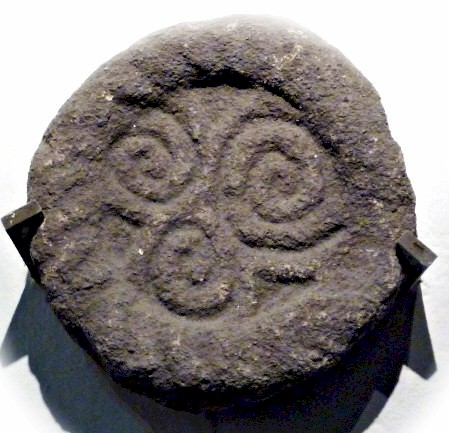 |
|
"Selection of carvings from |
 |
|
"Selection of carvings from |
1. We are the Red-Headed Tribe
I did not intend to write a historical narrative; I simply had a series of questions. And, I wanted to share the answers I found with others. This project began as a family genealogy. I knew that my families would take me back before the American Revolution. My intentional research limit was the water's edge. But, I still wanted to know where their forefathers came from and when.
While pursuing the who, what, when, etc. of genealogy, I came to find that the questions I was researching were common for most of my families: same places, same times, same circumstances. So, I started writing historical vignettes. Further research lead to more vignettes, which became interwoven, leading to a continual timeline from the Central Asian Steppe to Western Europe to pre-Colonial America and then to Southern Mississippi.
First question: Who are we?
Literally, my immediate family and our grandparents and great-grandparents. What was their ethnicity, and what did they look like? Research shows that we are Scot-Irish/ Welsh and ethnic German. Looking at paintings and photos of my ancestors, you can't miss the red hair and blue eyes, even on the German side.Second question: Genotype vs Phenotype.
Who am I genetically? I did the first yDNA test. I am Haplogroup R. I did additional yDNA tests. My terminal SNP is R-DF27.
My father had high cheekbones, deep set blue eyes, a cleft chin, and shockingly red hair. Except for the shockingly red hair, I look just like my Dad as does my little brother and even my little sister.Third question:
How did person A get to place X? As I intended to limit my research to when it reached the water's edge, I created an American Migration Project to describe those paths.Fourth question:
When did person B cross the ocean, and where did the family come from? Tracing back to the water's edge, I was not so interested in the individual persons, but more the circumstances. This lead to vignettes on European places, wars and histories.Rejoining my search at the other water's edge, I decided not to look at individuals and their lineages: I don't care if I descend from Genghis Khan or not: I don't. Instead, I looked at the extended families. But, the questions remained the same.
Fifth question:
How did extended family C get to place Y? Normally, you can only go back a hundred or more years tracing a family in the "Old Country." Now, I looked at ethnicity. Where did the family live, and what was their culture?Continuing questions:
My family history states, "We was from Wales." OK, who lived in Wales and when? Of course, we are the Celts. So, who are their ancestors and then their ancestors. Again, I set a limit on the research. yDNA testing proves I am a descendant of Haplogroup R. This is where my research stops; as information further back in time is available from the sciences.I have come to understand that as a descendant of the Celts, my phenotype does match my genotype. My family and I are genetically pre-disposed to look like the Celtic tribes of Galicia, Spain, and Ulster, Ireland. And, I call our tribe the Red-Headed Tribe.
So after collecting my disparate vignettes and writing several connecting articles, I find that this series of projects has become a historical narrative where I trace my lineage from the Central Asian Steppe to Western Europe to pre-Colonial America to Southern Mississippi using downstream markers of Haplogroup R, the evolution of the proto-Indo-European Language, and History from Antiquity to the present.
Were you to find the previous statement preposterous, perhaps you would prefer to skip (at least at first) the history and the methodology and go straight to evidences which prove my assertions. [PROOFS]
CE Lewis
Davenport IA
original publication 8/2015
revised addition 5/20192. Vignettes:
a. Rise of the Celts
3. Celtic Art
b. Hispania, Gallaecia and the Bronze Age
c. The Gaelic Invasion of Ireland, Scotland and Wales
e. Roman Britain and the Aftermath
3. Sources:
a. Proofs
* Evolution of mt Haplogroup H1bb
c. Evolution of the Indo-European Language
d. Celtic Art
h. The Lineage of the Lewis Family
i. Excerpts from the Antiquarian Journals of Wales
The photo of the carving, a remnant from our Celtic forefathers, is of a triskelion from the archeological digs in the vicinity of Castro de Santa Trega, A Guarda, Galicia, Spain. The extant ruins are from a 1st Century BCE oppidum. But, that site was built atop a previous settlement which is 2,000 years older.